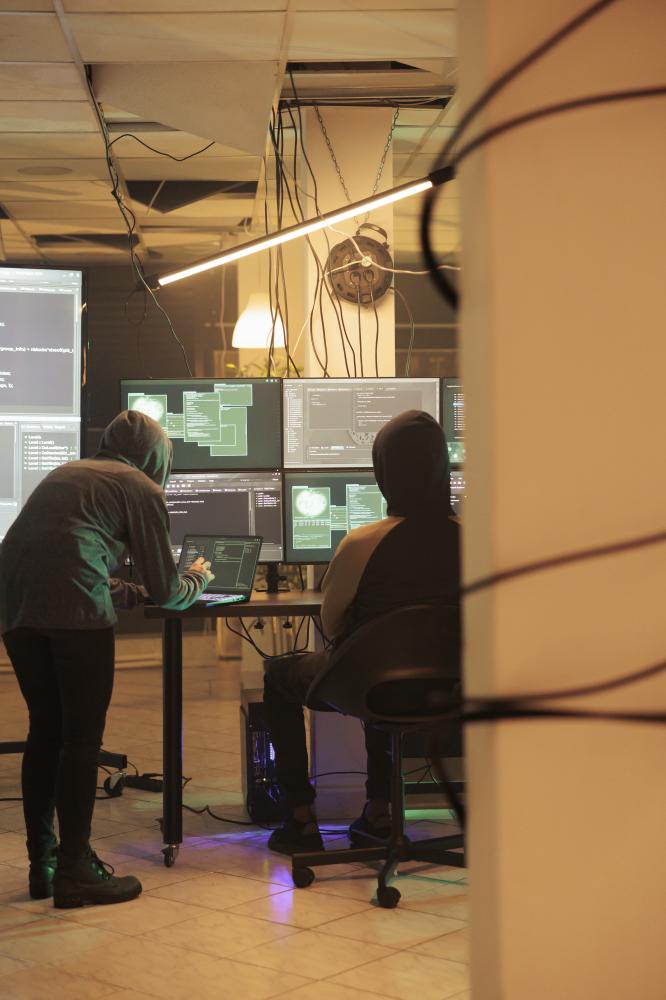
Exploring the Evolution of Web 3.0
Web 3.0 is reshaping the way we interact with the digital realm, taking the internet to new levels of functionality and decentralization. This new phase of the web emphasizes user empowerment, with applications that enable greater control and privacy. The transition from Web 2.0 to Web 3.0 has brought a significant shift towards decentralized ownership and blockchain technology, ensuring that users can interact without relying on centralized authorities. A critical aspect of Web 3.0 involves innovations in domains, where blockchain domains replace traditional ones, providing censorship resistance and enhanced security.
The #HashtagSpace platform leverages these advancements, illustrating the benefits of decentralized web services and blockchain domains in practice. By buying and utilizing hashtags as blockchain domains, users can decentralize their online presence, making it both more secure and autonomous.
Decentralized Applications (dApps)
Decentralized applications, or dApps, are at the forefront of Web 3.0 Applications Examples. Unlike traditional apps, dApps operate on peer-to-peer networks, enabling users to engage in direct transactions without intermediaries, fundamentally altering data privacy and financial transparency. These applications flourish on blockchain ecosystems like Ethereum, ensuring that data exchanges are immutable and trustless.
One prime example of dApps in action is decentralized finance (DeFi), which has revolutionized financial transactions by removing traditional banking systems. Through DeFi platforms, users can lend, borrow, and trade assets seamlessly across borders, reflecting the quintessence of Web 3.0’s global accessibility. However, it’s not just finance leading the charge; decentralized social media platforms and marketplaces are emerging, offering content creators and entrepreneurs a way to earn directly from their audiences.
Interestingly, my foray into dApps began with a decentralized social media platform, where content ownership was retained by the users, ensuring no corporate censorship. The experience was empowering, showcasing the potential of Web 3.0 in democratizing online interactions.
The Role of Smart Contracts
Smart contracts are self-executing contracts with the terms of the agreement directly written into code, playing a pivotal role in the Web 3.0 landscape. They facilitate, verify, and enforce the performance of a contract without the need for intermediaries, significantly reducing transaction costs and the possibility of fraud. Essential in various Web 3.0 Applications Examples, smart contracts underpin a vast array of services, from decentralized finance to supply chain management.
Their capabilities extend beyond mere transactions, automating complex processes and ensuring transparency across industries. In my professional experience, implementing smart contracts in supply chain logistics not only streamlined operations but also increased trust among partners, as each transaction became verifiable and immutable.
Smart contracts’ potential is vast, and their applications are becoming more diverse and innovative, with new use cases emerging continuously. They are crucial in governance models within blockchain-based organizations, known as decentralized autonomous organizations (DAOs), which operate through predefined rules encoded into smart contracts, allowing for a transparent and democratic decision-making process.
Blockchain Domains and the Future of the Web
The concept of blockchain domains is another compelling part of the Web 3.0 Applications Examples, illustrating a move towards a decentralized internet. Unlike traditional domains regulated by central bodies, blockchain domains are owned outright by individuals, immune to external control or censorship. This ownership model is a powerful draw for those seeking to protect their digital presence in a landscape where data privacy is paramount.
#HashtagSpace exemplifies this transformation by allowing users to purchase blockchain-based hashtags that function akin to domains, providing a decentralized digital identity. Each hashtag serves as a personal digital space that links directly to a user’s chosen web destination, enhancing online autonomy. In the era of Web 3.0, this shift towards blockchain domains ensures that privacy and ownership are at the forefront of web innovation.
Moreover, the integration of blockchain technology into domain systems presents a sustainable model for the future of the internet, paving the way for an era where users are empowered to navigate the web on their terms, free from centralized oversight and censorship.

What is a Web 3.0 Browser?
A Web 3.0 Browser is more than just the next evolution of web browsing; it’s a door to a decentralized digital experience that champions user autonomy and privacy. Unlike traditional browsers that are centralized, these browsers are built on blockchain technology, allowing users to interact with decentralized apps, websites, and protocols. This level of interactivity brings users closer to a world where personal data isn’t controlled by big corporations but by individuals themselves.
In the Web 3.0 ecosystem, the browser acts as a gateway to a universe of cryptographic identities and blockchain domains, offering users valuable tools to navigate the decentralized web seamlessly. These browsers integrate functionalities like cryptocurrency wallets, secure login systems, and peer-to-peer networking. For someone looking to truly embrace decentralization, a Web 3.0 Browser is an indispensable tool, serving both as a browser and a bridge to the evolving world of blockchain.
Personal experience has shown that using a Web 3.0 Browser feels like stepping into a new dimension where the internet is more personal and secure. The heightened level of privacy and control can be liberating for users who have grown weary of having their data harvested without consent. Embracing a Web 3.0 Browser means stepping away from the traditional online experience and moving towards a digital world that values individual freedom and transparency.
Features of a Web 3.0 Browser
The standout features of a Web 3.0 Browser revolve around decentralization and enhanced user control. One of the most significant advantages is its built-in cryptocurrency wallet, which allows users to send, receive, and store various digital assets directly without needing additional software.
Another defining feature is the ability to connect to decentralized applications (DApps), enabling peer-to-peer transactions and interactions without intermediaries. This connection fosters a more collaborative and user-centric online environment. It’s like having the keys to your own digital kingdom where you decide who gets access and when.
A notable convenience offered by Web 3.0 Browsers is their interoperability with blockchain domains. Traditional domains can often fall prey to hacks or centralized control, but with blockchain-based domains, users enjoy a higher level of security and resistance to censorship, ensuring a more reliable and robust online presence.
Finally, privacy-centric innovations in these browsers ensure minimal data collection, empowering users to take control of their digital footprint. This promise of privacy is not just theoretical; it’s ingrained in the architecture of Web 3.0 Browsers, fundamentally changing how we interact with the digital world.
Embracing Decentralization through Web 3.0 Browsers
Embracing a Web 3.0 Browser is like boarding a vessel bound for the uncharted territories of the decentralized web. This journey isn’t just for tech enthusiasts; it’s an invitation for everyone to reclaim their digital sovereignty. With features that promote privacy, security, and control, these browsers are the vanguard of the new internet age.
The transition to decentralized browsing demands a slight learning curve, as users must familiarize themselves with new paradigms like blockchain addresses and cryptocurrency transactions. However, the rewards of embracing this technology include unparalleled control over one’s digital interactions and data.
By prioritizing transparency and user empowerment, Web 3.0 Browsers challenge the status quo, pushing back against the centralized entities that have long dominated the internet landscape. They empower individuals to own their online identity, data, and interactions in a way that traditional browsers never could. It’s a shift that’s not just technical but philosophical, offering a glimpse into a future where digital freedoms are respected and upheld.
Exploring Web 3.0 Applications
As digital landscapes evolve, Web 3.0 Applications are reshaping the boundaries of the internet. They prioritize decentralization, giving users unprecedented control over their online experiences. Unlike previous iterations, these applications leverage blockchain technology to create environments where data privacy and ownership are paramount. Users are empowered to connect anonymously, surf without a trace, and maintain ownership of their digital identities, transforming how we interact in the digital realm.
Web 3.0 Applications are not just a technological evolution; they represent a philosophical shift towards democratizing the web. The promise of decentralization is alluring: imagine an internet where centralized entities do not hold the reins. Users can access services directly, often with cryptocurrency as an intermediary, bypassing traditional gatekeepers of the digital world. This new layer of the web infrastructure heralds a future where personal data is not a currency but a right.
Dynamic Tools and Innovations
Web 3.0 Applications are brimming with tools that foster innovation in previously unimaginable ways. At the core, these applications thrive on smart contracts, facilitating seamless transactions and interactions without intermediaries. This means businesses and users can engage with far less friction and significantly more trust. From finance to real estate, the possibilities are boundless.
Another hallmark of Web 3.0 Applications is the introduction of decentralized autonomous organizations (DAOs), which function without traditional hierarchical structures. These are communities that operate on agreed-upon rules encoded in smart contracts, offering transparency and member-driven decision-making. It’s like governing an online state where coin holders can vote on proposals, fostering collective ownership and responsibility.
Beyond governance, Web 3.0 Applications are revolutionizing digital content. Creators can now truly own and monetize their work without platform restrictions. Non-fungible tokens (NFTs) represent a new frontier for artists, musicians, and writers to sell and distribute their creations. This paves the way for an internet where creativity thrives without gatekeeping, and all stakeholders benefit from equal opportunities.
Personalized Experiences and Challenges
The allure of Web 3.0 Applications also lies in their ability to deliver personalized experiences like never before. By harnessing the power of artificial intelligence and machine learning, these applications offer tailored content that adapts to individual preferences. Imagine a digital ecosystem that learns from your online behaviors to suggest solutions you didn’t even know you needed.
However, navigating this brave new world is not without its challenges. While decentralization offers various benefits, it also demands heightened security measures. Users must be vigilant about protecting their digital keys and identities amid an otherwise trustless environment. With great power comes greater responsibility, and managing this shift may prove daunting for the less tech-savvy.
In essence, Web 3.0 Applications signal a revolutionary transformation in how we connect, interact, and transact online. They invite us to envision a collective digital future that embraces diversity and decentralization, all while challenging us to refine our relationship with the internet. These applications aren’t merely digital tools; they are the architects of a new world, building bridges to a more inclusive, transparent, and equitable internet for all.

What is an example of a Web 3.0 application?
One fascinating example of a Web 3.0 application is decentralized finance, or DeFi, which is revolutionizing the financial landscape by using blockchain technology to eliminate intermediaries. Imagine being able to lend, borrow, or trade assets directly with others around the world without needing a traditional bank. This empowers users by offering transparency, security, and accessibility. At #HashtagSpace, we see DeFi as a cornerstone of Web 3.0, showcasing how individuals can be more in control of their financial operations. This shift towards decentralization challenges the conventional financial systems and opens new avenues for users to engage directly with their money.
What is a web3 example?
A perfect example of a Web 3.0 application is decentralized social media platforms. These platforms allow users to own and control their content, offering a stark contrast to conventional social networks that monetize user data. At #HashtagSpace, we emphasize how such platforms enable users to interact without fear of censorship, as the community drives governance and content moderation. It creates an open environment where voices aren’t drowned out by corporate agendas. Imagine participating in a platform where your data isn’t a commodity but a right you retain. This is the promise and the disruptive potential of Web 3.0.
What are web3 apps?
Web3 apps, or decentralized applications (dApps), operate on peer-to-peer networks and are designed to run on blockchain technology. Unlike traditional apps, dApps offer transparency, immutability, and increased security by eliminating middlemen. For example, at #HashtagSpace, we explore how these apps can revolutionize digital advertising. Users can directly engage with campaigns and earn from interactions without intermediaries taking a cut. This direct connection fosters a more authentic and equitable online environment. Think about a world where your online interactions genuinely benefit you, without third-party interference. That’s the future these apps are building towards.
What is web3 in real life?
In real life, Web 3.0 embodies the shift from centralized to decentralized systems, where users have more control over their data and digital assets. It’s about creating a more transparent and user-focused digital experience. Take our work at #HashtagSpace, where we help individuals secure their online identities with blockchain domains. This ownership eliminates the risks of censorship and central control, allowing individuals to browse, post, and transact in a safe and autonomous way. Picture yourself exploring the internet without worrying about data breaches or privacy invasions–Web 3.0 aims to make this a reality. How would reclaiming control of your digital identity transform your online interactions?
What role do smart contracts play in Web 3.0?
Smart contracts are foundational to Web 3.0, automating and securing transactions without the need for intermediaries. These self-executing contracts have their terms directly embedded within coded protocols, ensuring that operations like asset transfers or data management occur smoothly and without third-party interference. At #HashtagSpace, we leverage smart contracts to facilitate seamless interactions within blockchain domains, ensuring cryptographic security and trust in all our transactions. Now imagine automating your business agreements with transparency and efficiency–smart contracts make this possible, redefining trust in the digital realm. Have you considered how automating agreements could impact your personal or professional life?
Resources
- Ethereum – Learn more about Ethereum, a leading blockchain platform for decentralized applications.
- DeFi Pulse – Explore decentralized finance (DeFi) platforms and protocols transforming the financial landscape.
- CoinDesk – Stay updated on cryptocurrency news, trends, and market analysis.
- DAO.org – Discover resources on decentralized autonomous organizations (DAOs) and decentralized governance.
- NFT Now – Learn about non-fungible tokens (NFTs) and their impact on the digital art market.


